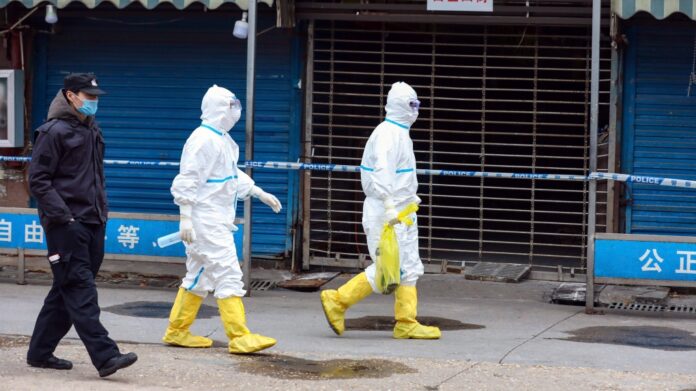A group of researchers say they have more evidence to suggest the COVID-19 pandemic started in a Chinese seafood market where it spread from infected animals to humans.
The evidence is laid out in a recent study published in Cell, a scientific journal, nearly five years after the first known COVID-19 outbreak.
Angela Rasmussen, a research scientist and virologist at the University of Saskatchewan’s Vaccine and Infectious Disease Organization, is a co-author in the study that looked at genetic evidence collected at the market, which suggests animals susceptible to the virus were being sold there.
“Up until this, we didn’t have that clue or that link,” Rasmussen said.
The team’s previous research pointed to the market in Wuhan, China as the origin of the pandemic. But for that to be true, the transmission would have had to come from live animals, Rasmussen said. Before the genetic evidence became available, there was only conflicting observational information for them to go by.
“We have evidence that the infection spread outward in the human population from the market. Now we have information that proves that those animals were at the market, and we know that at least some of them were susceptible,” Rasmussen said.
The most common animal at the market was the raccoon dog, a fox-like canid, which is known to be susceptible to the virus. Researchers continue testing to see what other market animals could have been carrying the virus.
“As far as we know, the animals themselves were never sampled. We probably won’t be able to locate the exact infected animal,” Rasmussen said.
Information suggests the earliest human cases started around the market in a “very tight geographic area,” according to Rasmussen. Evidence shows the virus spilled over twice from animals to humans in two independent cases.
“There’s really no way to explain these data other than to say that it came from these animals, which we know are susceptible,” she said.
COVID-19’s origin has been widely debated.
In a classified document, the U.S. Department of Energy reported with “low confidence” last year that the pandemic most likely came from a Wuhan laboratory leak.
Rasmussen says that theory is possible, but likely not probable.
The lab leak theory would require somebody to get infected at the lab, which is several kilometres away from the market, Rasmussen said. That person would then have to travel to the market, without infecting anyone else along the way, before spreading the virus to people at the market.
“Two weeks later, the same exact thing would have had to happen with the second lineage of the virus,” she said.
“It’s very, very difficult to explain a laboratory origin with the evidence that we have now.”
Infectious disease specialist Dr. Dale Kalina says the recent study does a good, sensible job of hazarding “a very close approximation” of where the viruses originated.
“These are experts in their field and it’s important to be able to understand that this is their best understanding of where the virus is coming from,” Kalina said.
“I think that there will always be speculation because one can never fully understand every aspect of that.”
‘The most critical questions of the pandemic’
Rasmussen’s lab is dedicated to pandemic prevention, which includes identifying intervention tactics to prevent the spread of a virus.
“Understanding how this pandemic started is a critical question for preventing the next one,” she said.
The study suggests the Wuhan market was an ideal breeding ground for various viruses to mutate and spread considering the number of wild animals in close proximity to humans.
Kalina says it is always important to know as much as possible about pandemics and the way viruses spread in order to reduce the risk of recurrent pandemics.
“This is not the last pandemic that we will ever see,” Kalina said.
“Being able to reduce those conditions that can breed worse viruses, I think that that will help us.”

